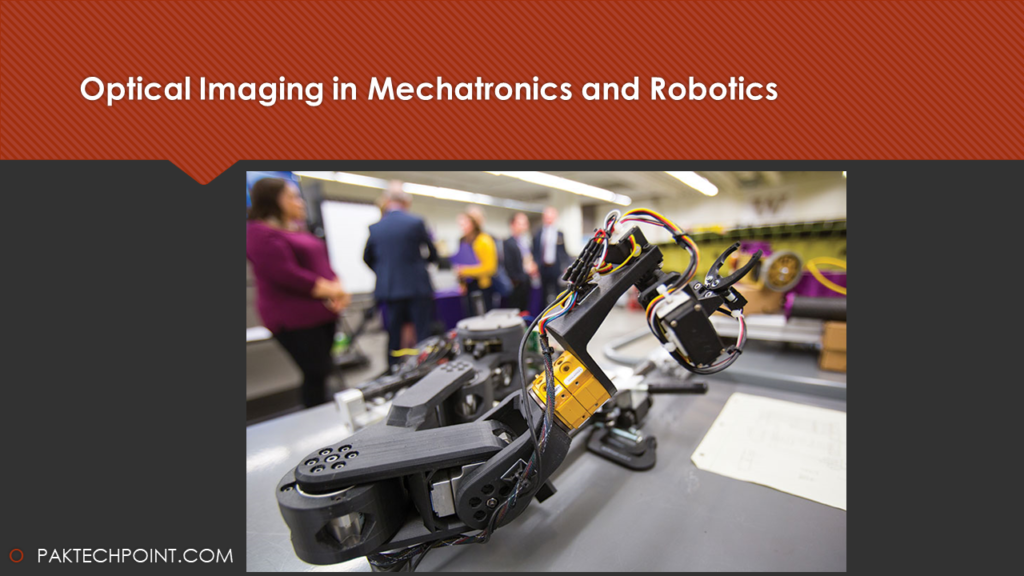In the context of mechatronics and robotics, optical imaging systems commonly utilize cameras (such as CCD or CMOS types) along with appropriate scene illumination. These systems analyze images (or sequences of images) using image-processing algorithms. The analysis involves studying the distribution of light intensity and color in the image. Specific features of objects are extracted from distinct patterns of light intensity.

Positional information is inferred from the positions of these features within the image, in conjunction with camera parameters like position, orientation, and focal length. Certain conditions must be met to obtain accurate images: suitable illumination for achieving proper contrast and avoiding unwanted shadows, as well as a camera configuration that offers a clear view of the object or scene. Additionally, the camera’s resolution should be high enough to capture relevant details without loss.
It’s important to recognize that a 2D image can only provide a limited perspective of an object or scene, and it might not encompass the entire view due to self-occlusion. When dealing with multiple objects, some of them might be partially obscured by others (occlusion), which can complicate the process of identifying and analyzing the objects.
Even under optimal conditions, an image alone might not provide sufficient information for the intended task. Beyond understanding the object itself, we require a comprehensive model of the imaging process. This includes factors such as the camera’s position, orientation, focal length, and the positioning of light sources in relation to both the object and the camera. All of these aspects collectively determine the quality of the resulting image, from which features need to be extracted.
The object’s position and orientation within the scene can be deduced by utilizing the available information in conjunction with knowledge about the imaging system. Numerous algorithms have been developed to extract valuable features from images, which consist of a multitude of samples described by color parameters, gray-tone values, or binary values for black and white images. These algorithms identify specific combinations of adjacent pixels, like edges, and derive region boundaries from them. However, noise within the image can disrupt this process, prompting the development of specialized algorithms to mitigate its impact.
The outcome is an image that provides insight into some of the object’s characteristics. For more in-depth details about feature extraction, I recommend referring to literature on computer vision and image processing.